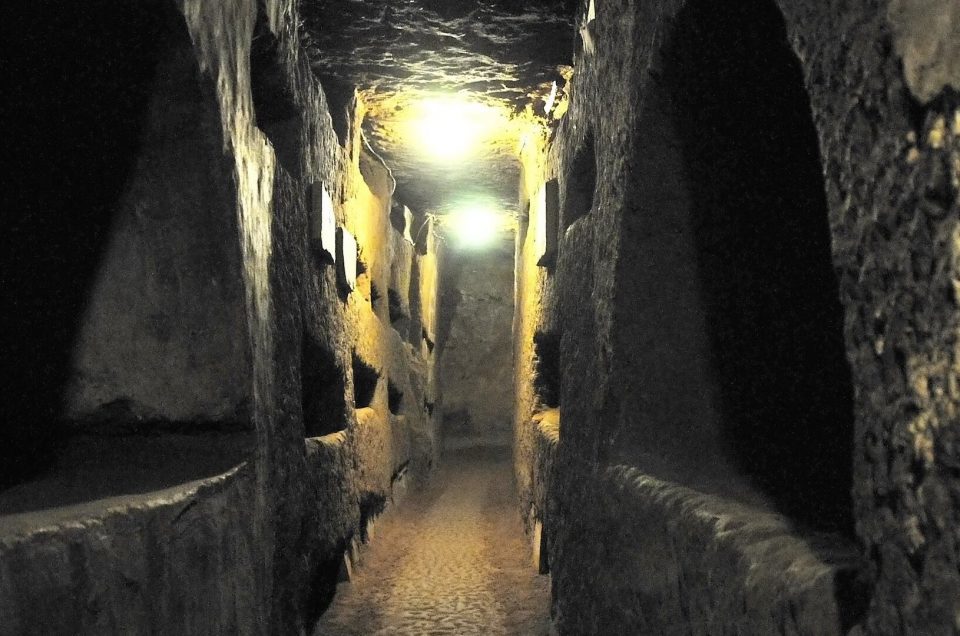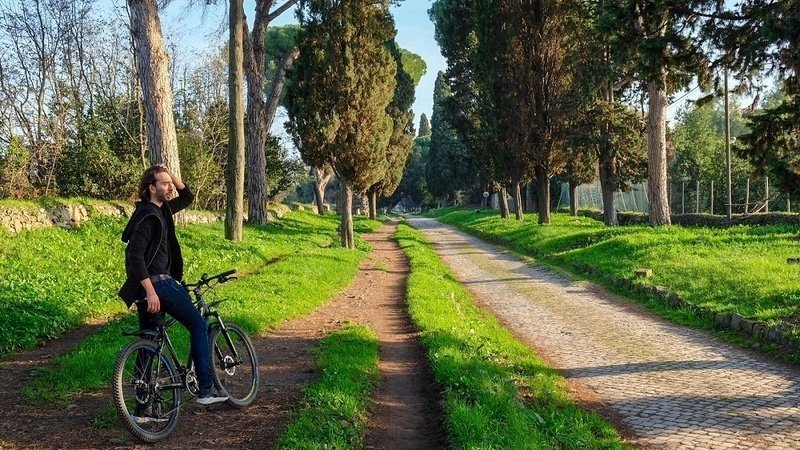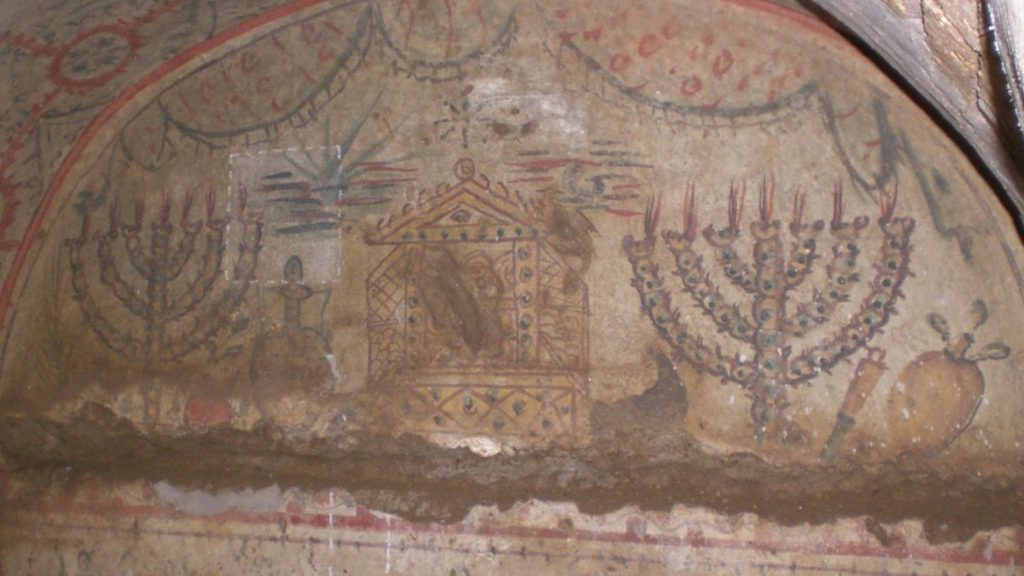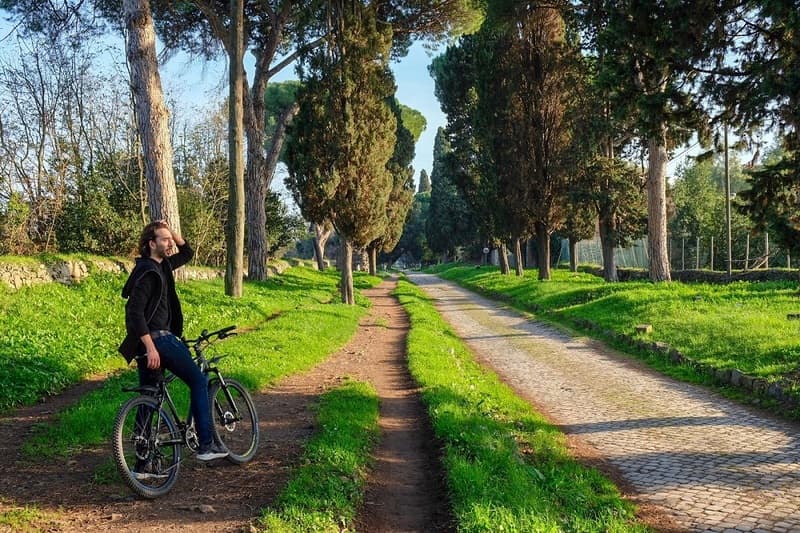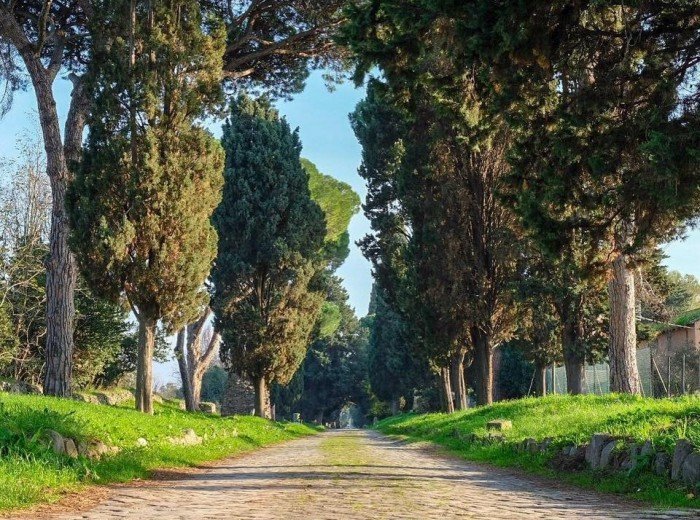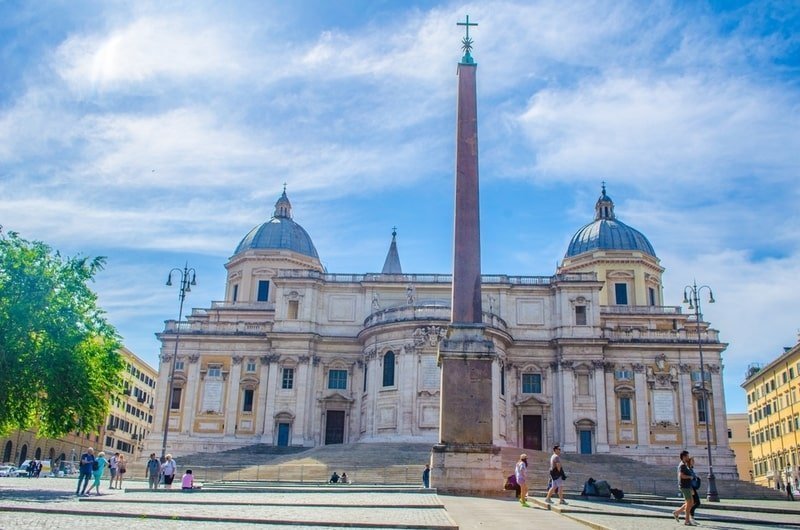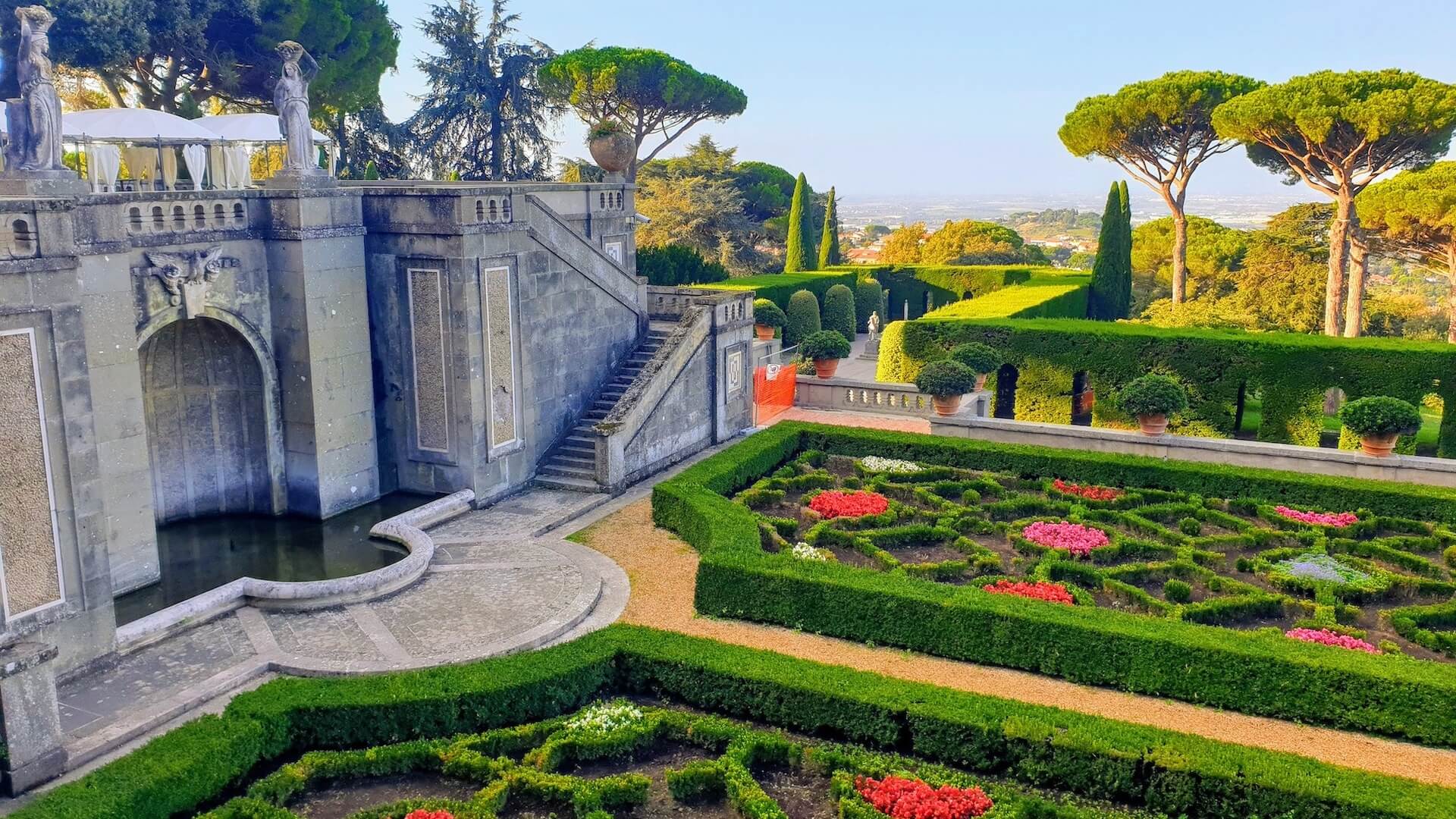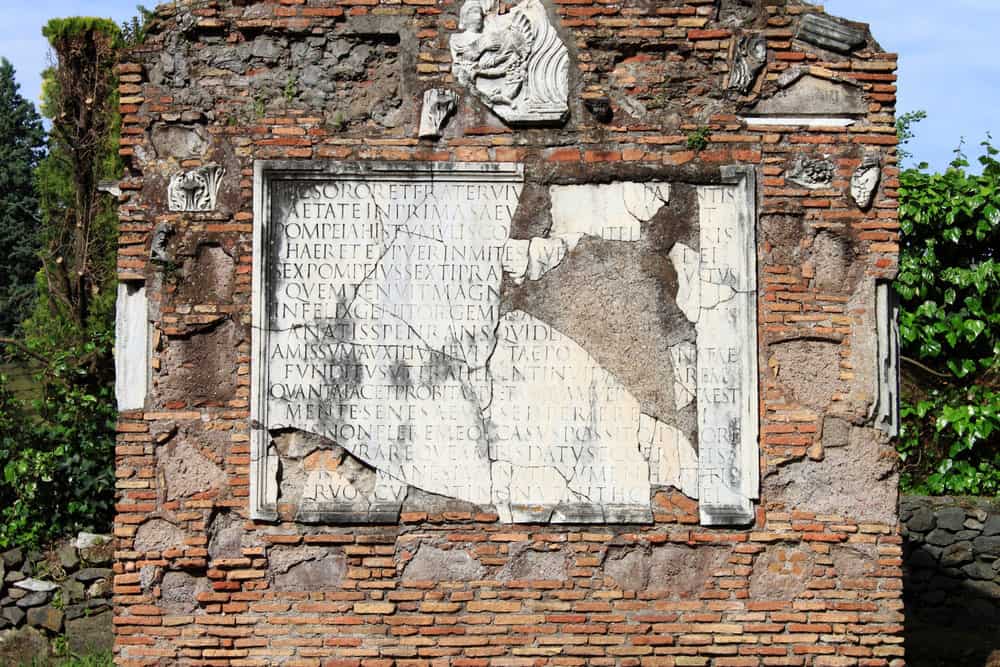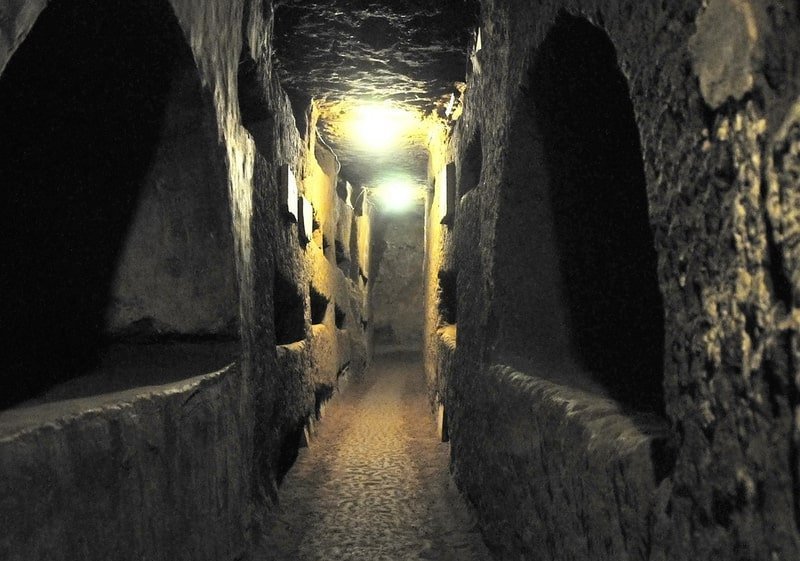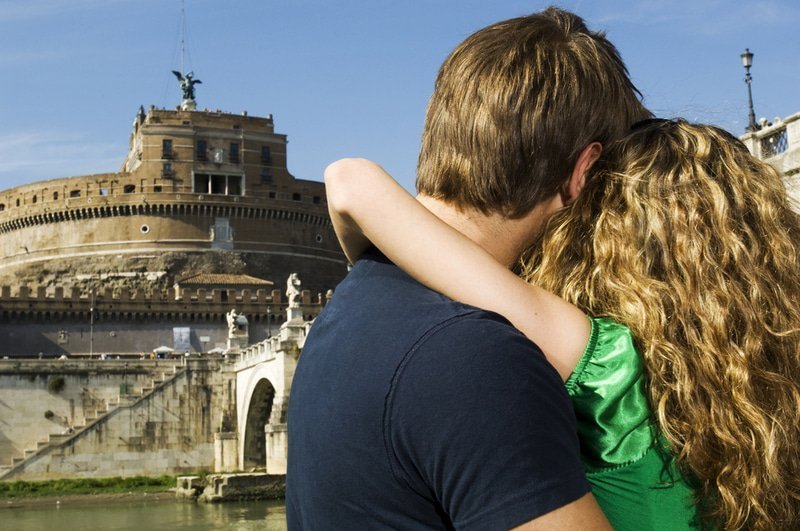Delve beneath the Eternal City to explore the expansive labyrinths that lie beneath through our Rome catacombs tours. A rich vein of history runs through the roads outside Rome. Burial was forbidden within the walls of the city, unless you were fortunate enough to be a Caesar. The fear of disease and cross contamination meant that vast necropolises – cities of the dead – appeared around the outskirts of ancient towns and cities, as the final resting places of the city’s inhabitants.
As Rome’s first and foremost ancient road, the Old Appian Way became prime post-mortem real estate for Rome’s rich and famous. Cycle down it today and you’ll be treated to the same sights that greeted travellers 2,000 years ago. Monumental burial structures, like the tomb of Cecilia Metella, and more modest inscriptions detailing the lives and legacies of those lost, stand side by side, stretching all the way down to Castel Gandolfo. But scratch beneath the surface, bury beneath the ground, and you’ll find that alongside the road are several catacombs, each of which houses thousands of ancient remains.
The origins of Rome’s catacombs
Uncovered by accident in the 16th-century, the Catacombs of Rome date back to the early 2nd-century BC and are most famous for Christian burials, but people of all religions can be found buried there. There is said to be at least 40 catacombs that run beneath the city, many of which have only recently been discovered. These catacombs are mostly excavated from the local tuff, or volcanic rock, and are most noted for Christian burials.
The name of the catacombs is interesting in itself. The word comes from two ancient Greek words, katà and kymbe, meaning ‘close to the quarry.’ Translating into Latin as catacumbas, the term was fittingly descriptive. For before being used as a place of burial, Rome’s first catacombs, the Catacombs of Saint Sebastian, were a quarry, from which the Romans extracted pozzolana (volcanic ash) which, when mixed with water, formed a kind of cement.
The custom of burying the dead underground originated with the Rome’s forebearers, the Etruscans. The later Romans continued this custom, but introduced cremation and placed the ashes into pots or urns in a columbarium—an underground version of a mausoleum. Inhumation, or the burial of unburnt remains, became more fashionable towards the end of the 2nd-century AD. And so graves and sarcophagi, ranging from simple to elaborate depending on the wealth of the deceased, became commonplace.
Venture beneath the earth on our Rome catacombs tours
Walks Inside Rome offers two main catacombs tours. Our first guides you through one of Rome’s main Christian catacombs – the Catacombs of San Sebastiano or San Callisto. Descending from the entrance on Rome’s Appian Way, you’ll explore their darkened corridors with your expert guide. The bodies that once lined their cavities are – mercifully – long gone, but the catacombs make for a fascinating visit, helping us understand the importance of Christianity in ancient Rome.
Some are heavily decorated while others are plain, an indication of the hierarchy of the catacombs. The catacombs are always a hit with kids and families: there’s something about their macabre purpose and the spookiness of these underground tunnels that holds a particular allure for children. Just be sure they stick close to you as the catacombs stretch on for miles!
Our second Rome catacombs tour introduces you to one of the city’s most fascinating and least-visited attractions: the Jewish catacombs. There are six Jewish Catacombs in total, although only one, “Vigna Randanini” can be visited. Very few organisations are able to arrange an exclusive opening of these catacombs. Fortunately we are one of them.
A private tour of the Jewish Catacombs introduces you to the wider galleries and ‘Kokhim’ graves with their wonderfully painted cubicula. The catacombs are in remarkably good condition, and are smaller and more intimate than others. We can attribute the modest nature of the tombs to the poverty suffered by the Jewish community and the Jewish tendency to shun ostentatiousness. We can attribute the fact that the Jewish Romans created their own catacombs to their wish to avoid the Greek and Roman custom of cremation.
Exploring the catacombs, you’ll find many traditional Jewish, Talmudic and Biblical, including the menorah, the shofar, the luvav, palm branches, and a circumcision knife. Your private expert guide will be able to walk you through their meaning, bringing their stories to life as you undertake this unforgettable journey.
Rome catacombs tours: the essentials
- Make sure to book in advance: the number of people allowed inside the catacombs at one time is limited. So to make sure you avoid disappointment, we’d recommend you book with us well in advance. If you’re making more of a last minute trip to Rome though, no problem! Just get in touch and we can arange a private tour for you whenever you want!
- Bring warm clothing: even when temperatures soar outside, the catacombs can get pretty chilly! You’ll be underground for around an hour, so packing a light sweater or cardigan would be advisable over summer or something heavier during winter. Some comfortable footwear is essential too, as the road these catacombs are on – Via Appia Antica – is over 2,000 years old!
- Combine your Rome catacombs tour with a tour of ancient Rome: the catacombs on the Appian Way are a fascinating, and often overlooked, part of Rome’s ancient history. But to really appreciate them in context, you might want to visit some other burial structures within the city of Rome itself (preserved for the Caesars, naturally). A tour of Castel Sant’Angelo, which started off as Hadrian’s Mausoleum, or a walk above the Imperial Forums and the Column of Trajan are the perfect accompaniments to a Rome catacombs tour!
Discover the Italian capital with Walks Inside Rome
For more than 20 years, Walks Inside Rome has been offering immersive, authentic, and educational private and small-group tours and Rome kids and families experiences. Our team of local, licensed guides are seasoned experts in art, history, archaeology and food. Our combined expertise and experience transforms your time in Rome into something truly exceptional.
To check out our catalogue of tours and experiences, visit our website or contact us directly. We can’t wait to hear from you so we can customise your own Rome travel guide and start exploring together!

